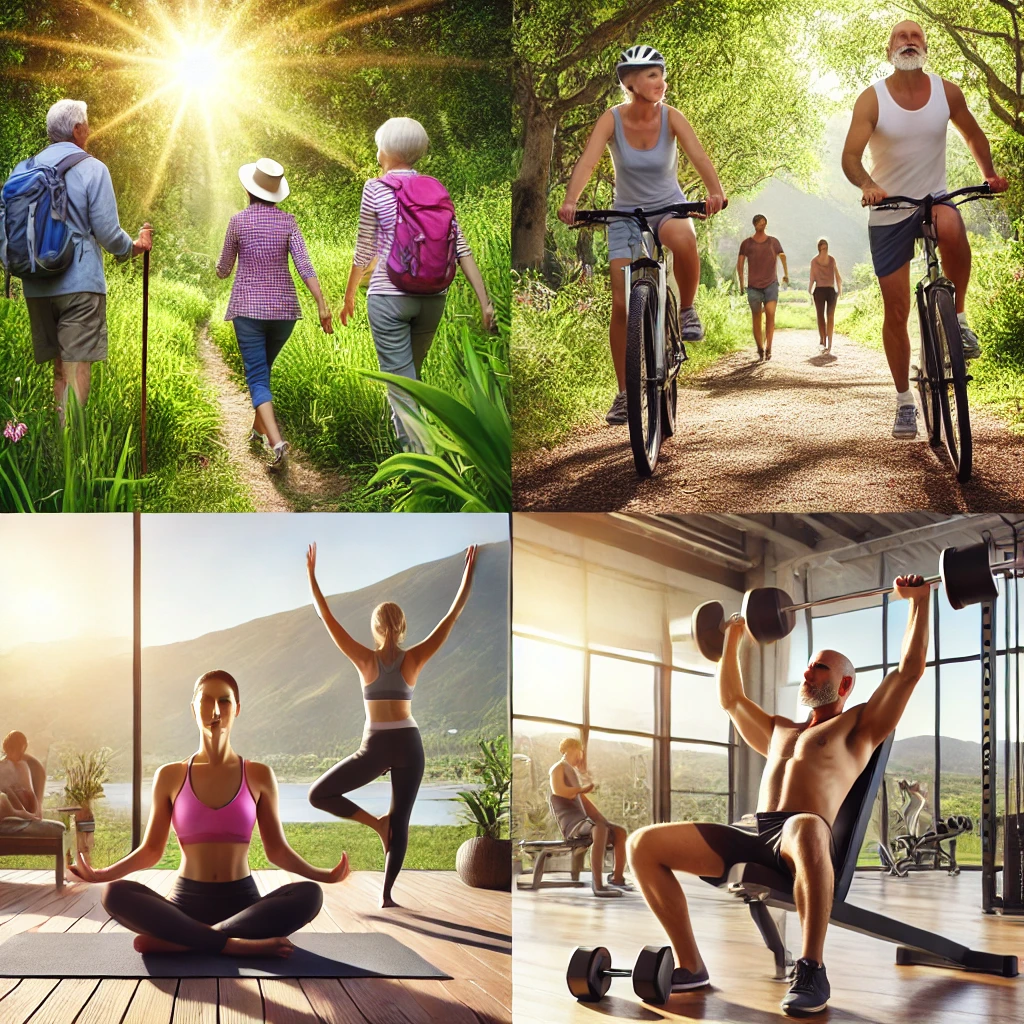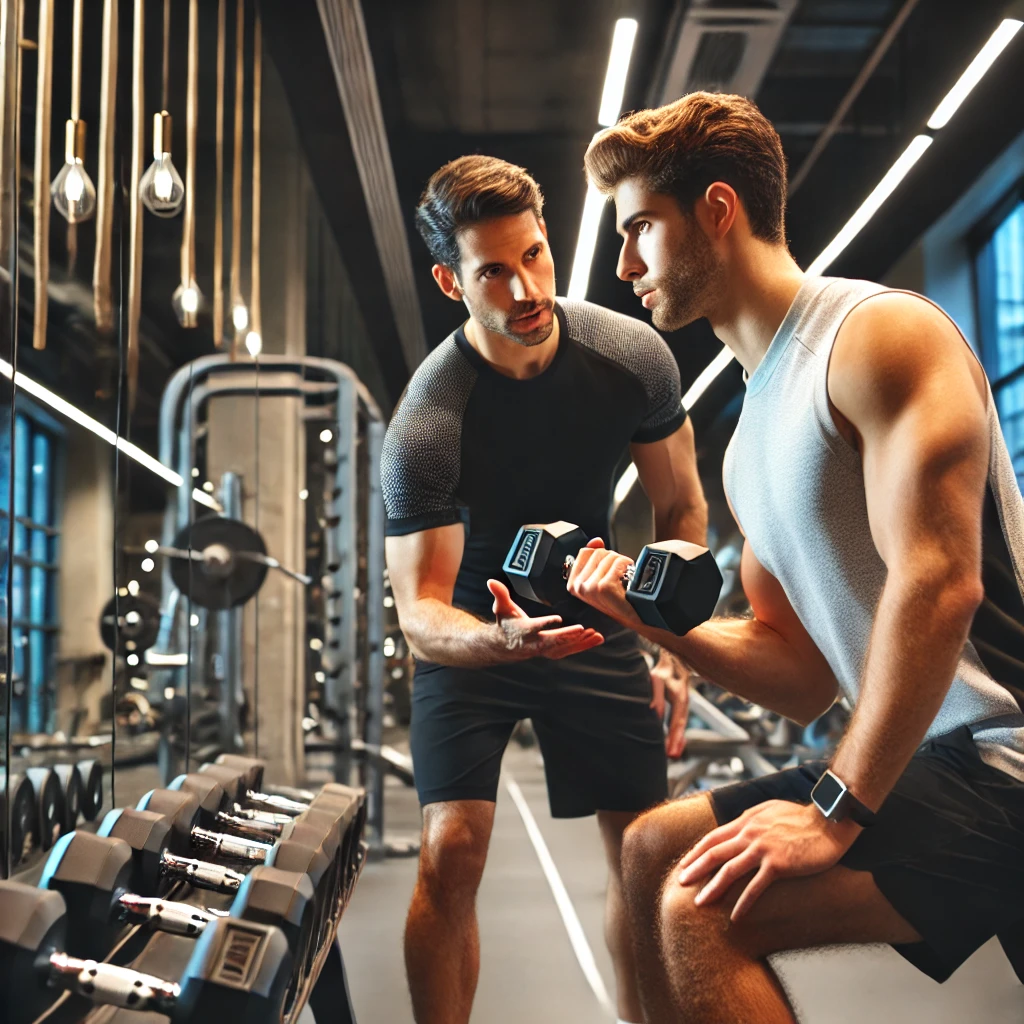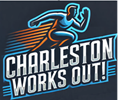The Ageless Athlete: Why Exercise in Your 50s is More Important Than Ever

Turning 50 is a milestone. It marks years of experience, wisdom, and…a body that’s subtly (or not-so-subtly) changing. While aging is a natural process, how we age is largely within our control. And one of the most powerful tools we have to shape healthy aging is daily exercise. This isn’t about achieving a youthful physique; it’s about maintaining vitality, independence, and a high quality of life for the decades ahead. This blog post explores why exercise in your 50s isn’t just beneficial – it’s crucial.
Beyond the Physical: The Holistic Power of Exercise
The benefits of exercise in your 50s extend far beyond the physical. While preventing disease and maintaining physical function are significant, the positive impacts on mental and emotional well-being are equally profound. Regular physical activity acts as a powerful antidote to stress, anxiety, and depression. It releases endorphins, those natural mood boosters, leaving you feeling happier, more energized, and more resilient to life’s challenges.
The Physical Perks: Combatting Age-Related Changes
As we age, our bodies undergo several significant changes. These include:
- Loss of Muscle Mass (Sarcopenia): This natural decline in muscle mass and strength starts as early as our 30s, but accelerates in our 50s. Strength training is crucial to combat this, preserving muscle mass, strength, and power, preventing falls, and improving overall functional fitness. This means you’ll be able to perform everyday tasks, like lifting groceries or climbing stairs, with ease.
- Decreased Bone Density (Osteoporosis): Bone density naturally decreases with age, increasing the risk of fractures. Weight-bearing exercises, such as walking, hiking, dancing, and strength training, stimulate bone growth and improve bone density, mitigating this risk.
- Reduced Metabolism: Our metabolism slows down with age, making it easier to gain weight. Regular exercise boosts metabolism, burns calories, and helps maintain a healthy weight, reducing the risk of obesity-related diseases like type 2 diabetes and heart disease.
- Cardiovascular Decline: Heart health is paramount. Cardiovascular exercises, like brisk walking, swimming, cycling, and dancing, strengthen the heart, improve blood circulation, lower blood pressure, and help manage cholesterol, reducing the risk of heart disease and stroke.
Targeted Exercises for the 50+ Crowd
The key is to find activities you enjoy and can realistically incorporate into your daily routine. Remember, it’s about consistency, not intensity.
- Strength Training: Focus on compound exercises that work multiple muscle groups simultaneously, such as squats, lunges, push-ups, rows, and deadlifts. Start with lighter weights and fewer repetitions, gradually increasing the intensity as you get stronger. Aim for at least two sessions per week. Find local Charleston gyms here: Charlestonworksout.com/listing-category/gyms
- Cardiovascular Exercise: Choose activities you enjoy – walking, swimming, cycling, dancing, or even gardening. Aim for at least 150 minutes of moderate-intensity cardio per week, spread throughout the week.
- Flexibility and Balance Exercises: Yoga, Pilates, tai chi, and even simple stretching routines are essential for maintaining flexibility, balance, and preventing falls. These are crucial for maintaining mobility and independence as we age.
- Functional Fitness: Focus on exercises that mimic everyday movements, like lifting, carrying, and reaching. This improves your ability to perform daily tasks without difficulty.
Addressing Concerns and Finding Your Fit

Before embarking on a new exercise program, especially if you have any pre-existing health conditions, consult your doctor or a physical therapist. They can help you develop a safe and effective plan tailored to your individual needs and limitations.
- Pre-existing Conditions: Don’t let health concerns discourage you. Many exercises can be modified to accommodate various conditions. Work closely with healthcare professionals to find activities that are both safe and beneficial.
- Finding Motivation: Join a fitness class, find a workout buddy, or hire a personal trainer for extra support and motivation. Set realistic goals and celebrate your progress along the way.
- Listening to Your Body: Pay attention to your body’s signals. Rest when needed, and don’t push yourself too hard, especially when starting.
The Mental and Emotional Benefits: A Brighter Outlook
The impact of exercise on mental well-being is often underestimated. Regular physical activity:
- Reduces Stress and Anxiety: Exercise is a natural stress reliever. It helps regulate hormones, reducing cortisol (the stress hormone) and boosting endorphins, which have mood-boosting effects.
- Improves Sleep Quality: Regular exercise can significantly improve sleep quality, leading to better energy levels and overall mood.
- Enhances Cognitive Function: Studies show that regular exercise can improve memory, attention, and cognitive processing speed, protecting against age-related cognitive decline.
- Boosts Self-Esteem: Achieving fitness goals, no matter how small, boosts self-esteem and confidence, contributing to a more positive self-image.
Making Exercise a Lifelong Habit
The key to reaping the long-term benefits of exercise is to make it a sustainable part of your lifestyle.
- Start Small: Don’t try to do too much too soon. Start with short, manageable workouts and gradually increase the intensity and duration as you get fitter.
- Find Activities You Enjoy: The most important factor is finding activities you genuinely enjoy. If you hate running, don’t force yourself to run. Find something that you look forward to, and it will be easier to stick with.
- Make it a Social Activity: Join a fitness class, find a workout buddy, or participate in group activities to enhance motivation and enjoyment.
- Integrate Exercise into Your Daily Routine: Take the stairs instead of the elevator, walk or cycle instead of driving short distances, and incorporate short bursts of activity throughout your day.
Conclusion: Embrace the Ageless Athlete Within
Your 50s are not the end; they’re a new beginning. By prioritizing daily exercise, you’re not just maintaining your physical health; you’re investing in your overall well-being, vitality, and independence for many years to come. Embrace the ageless athlete within, and enjoy the journey of healthy, active aging.

Leave a Comment